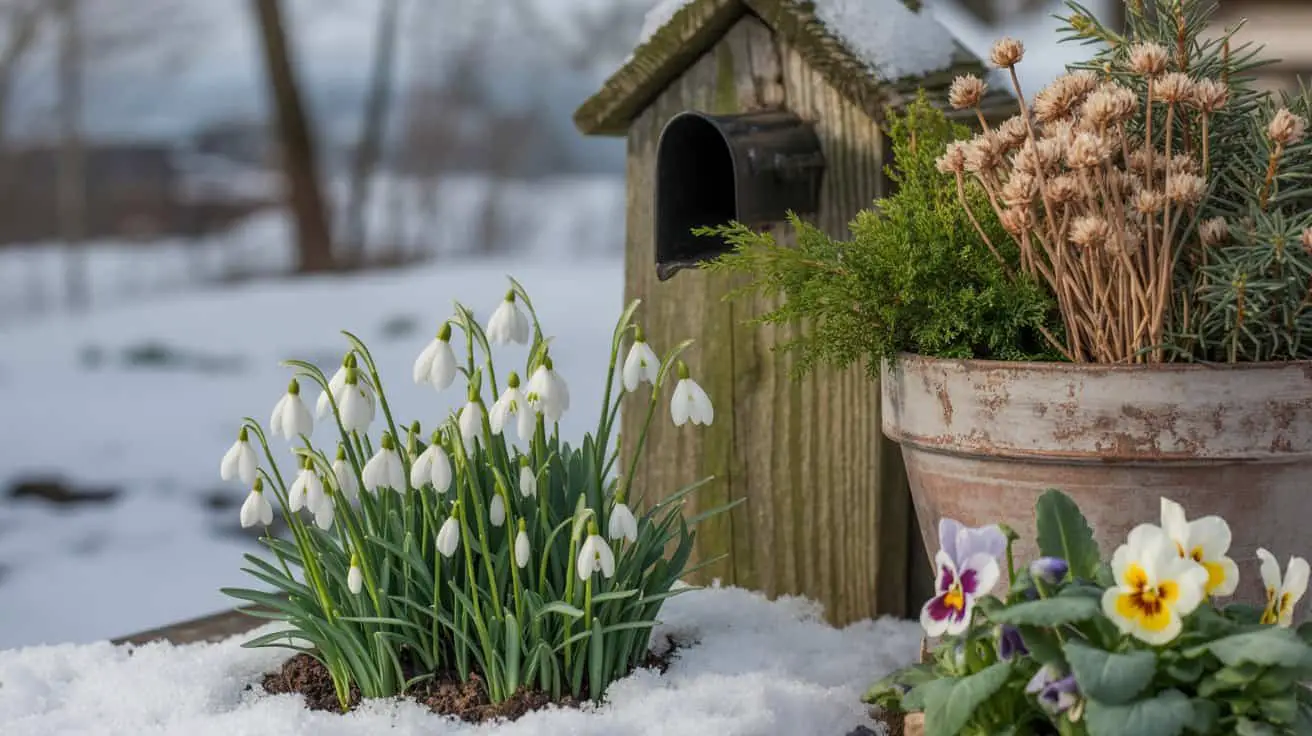
We all love a garden that’s bursting with color in spring or overflowing with veggies by summer, but winter? It’s the tricky one. Everything looks a bit grey, your hydrangeas are basically sticks, and the backyard starts feeling like a forgotten project. But adding winter flowers—and doing it on a budget—is 100% doable, even in a family yard where pets dig, kids stomp, and time is limited.
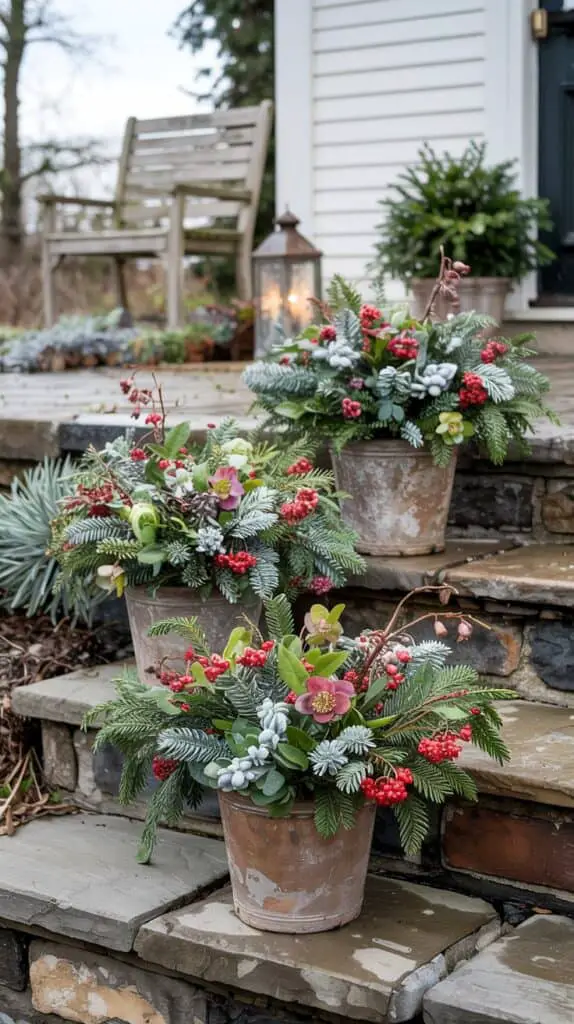
The secret is choosing winter flowers and plants that don’t just survive the cold but thrive in it. You want flowers that are low-maintenance, visually interesting, and preferably not something the wind can knock over in five seconds. Even a few smart additions can make your garden look cared for and calm, without needing spring-level effort or cash.
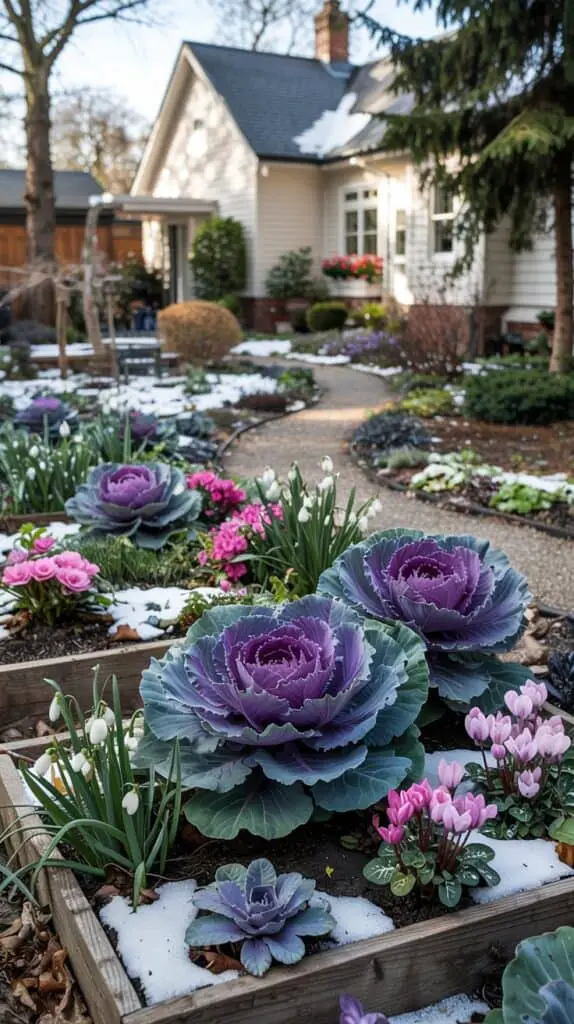
Here’s how to bring that cozy, color-popping energy into your winter yard—and actually make it work for real life.
Start with cold-loving foundation plants
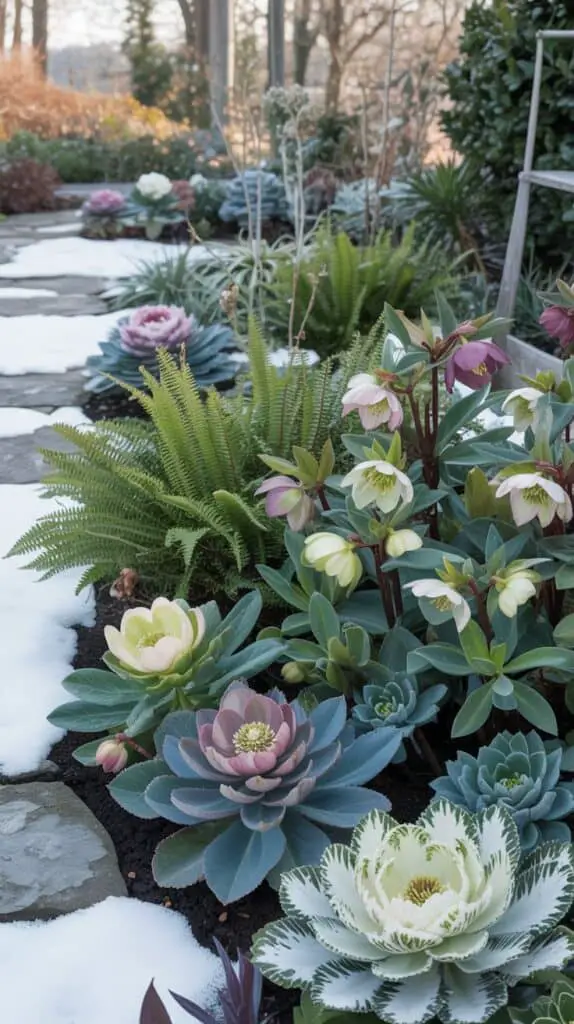
Before you get to flowers, think about winter-hardy plants that create a green backdrop. These are your anchors—plants like hellebore, evergreen ferns, and ornamental cabbage. They add texture and structure so the actual flowers don’t have to work so hard to make an impact. Hellebores, sometimes called the “Christmas rose,” are ideal. They bloom in shades of pink, white, and deep plum from late fall to early spring, even when there’s snow.
Set these up in clusters near walkways or raised beds where they’re easy to see. In a budget yard, using perennial winter plants like these means you don’t have to replant every year. Bonus: they’re usually pretty low-maintenance and animal-resistant.
Plant pockets of color with snowdrops and pansies
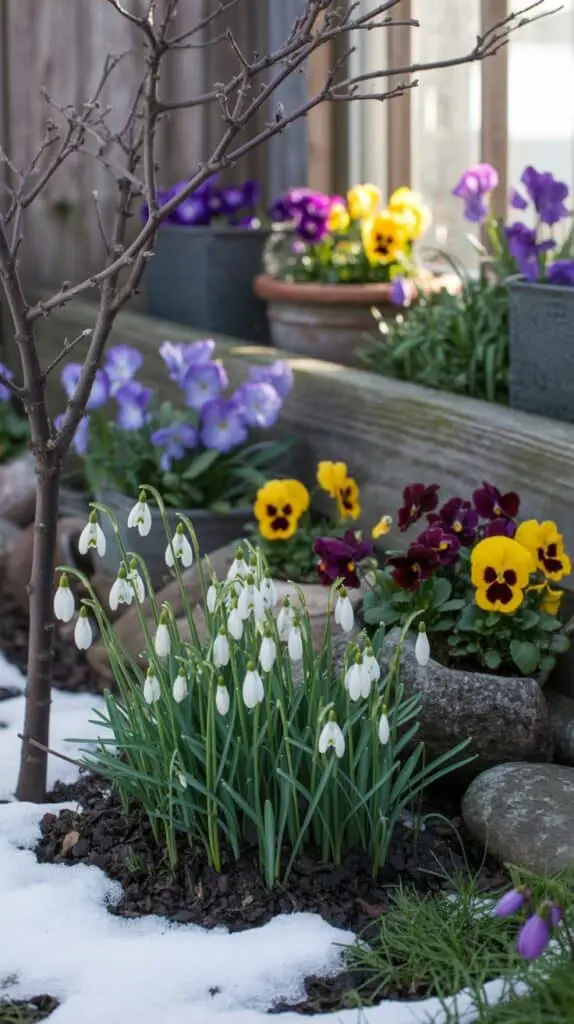
One of the easiest and most affordable ways to add charm to a winter yard is with snowdrop flowers. These tiny white blooms show up in January or even earlier depending on your climate, and they’re tough. You can plant bulbs in fall and then basically forget about them—they’ll show up on their own year after year. Place them under trees, along fence lines, or even in rock gardens for that magical, “oh they just grow like that” vibe.
Pair them with cold-tolerant pansies, which come in purples, yellows, and rich burgundies. These are your January flowers—low effort, big reward. They work well in containers, window boxes, or scattered through mulch beds where summer flowers have died back.
Try container-friendly winter floral arrangements
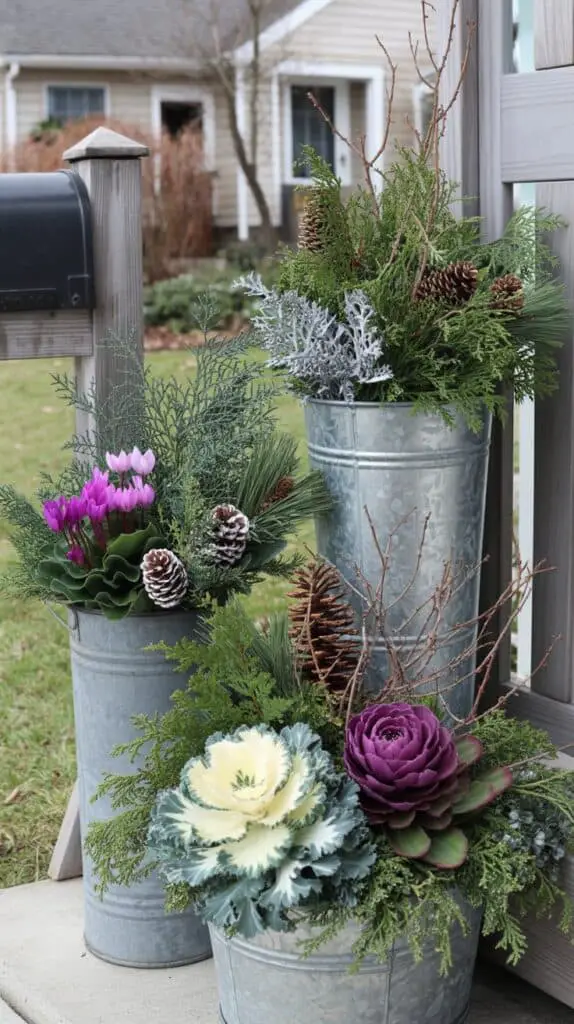
You don’t have to landscape the whole yard—sometimes all it takes is a few winter flower arrangements in the right places. Use containers you already have (even a galvanized bucket works), and fill them with a mix of seasonal greens like cedar or fir, plus winter florals like cyclamen, dusty miller, and ornamental kale. Throw in a few pinecones or branches for height, and you’ve got a no-fuss winter floral arrangement that looks good all season.
Place one near the mailbox, one on the porch, and one by the backyard gate. It’s a small effort that makes the whole space feel more alive—even when most plants are sleeping. These are great for budget-friendly yards, especially in small suburban homes where you just need a few focal points to pull things together.
Use autumn flowers that hang on through winter
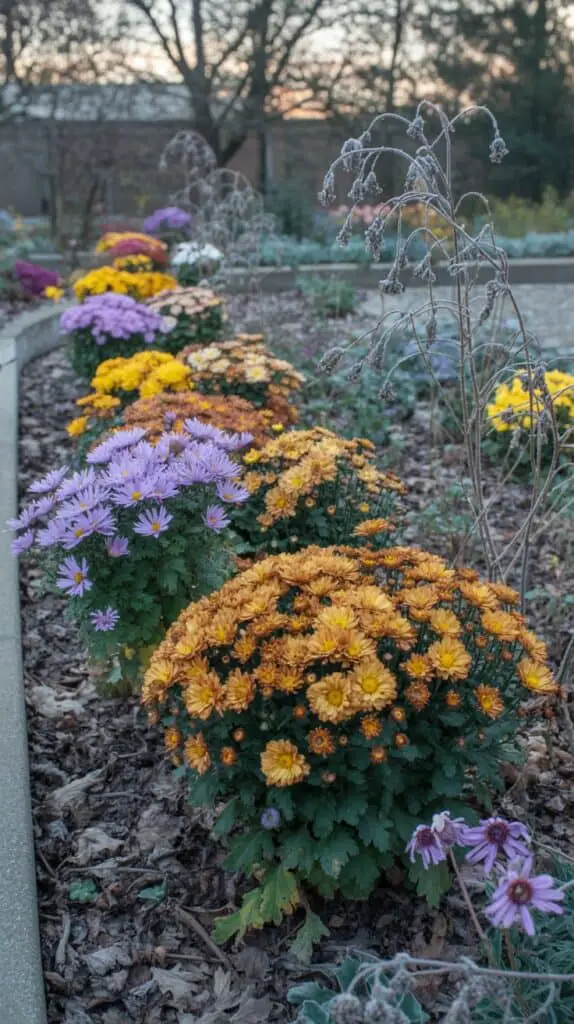
Some fall flowers have serious staying power and will keep blooming well into November and beyond. Chrysanthemums are the obvious choice—they’re affordable, come in every color, and last longer than most kids’ attention spans. But you can also plant asters or Japanese anemones in beds or borders for a soft, wild look that fades gracefully into winter.
In family gardens where everything gets a bit chaotic, using autumn flowers that don’t need daily attention is a win. Many of these plants are perennials, too, so they come back next year without extra spending. Try planting them near paths or in front yard beds where they’ll get noticed even as they start to fade. Their seed heads also look beautiful with a light frost.
Add dried and evergreen elements for texture

Not every flower in your yard needs to bloom to be beautiful. Add contrast and depth using dried flower stems and evergreen accents like rosemary, boxwood, or even lavender that’s been left to go woody. These give the illusion of life and detail, and they hold up through wind, frost, and forgetful watering.
Create clusters using branches of dried hydrangea, tall grass stalks, and sprigs of greenery tied together with twine or placed into raised planters. It’s budget-friendly, uses what you already have, and brings that winter blumen feel into your space in a very cozy, natural way.
This is also a great way to involve kids—send them on a mission to collect branches, pinecones, or dried seed pods from around the yard or local park (bonus points if you sneak in a nature lesson).
Don’t forget the fence line
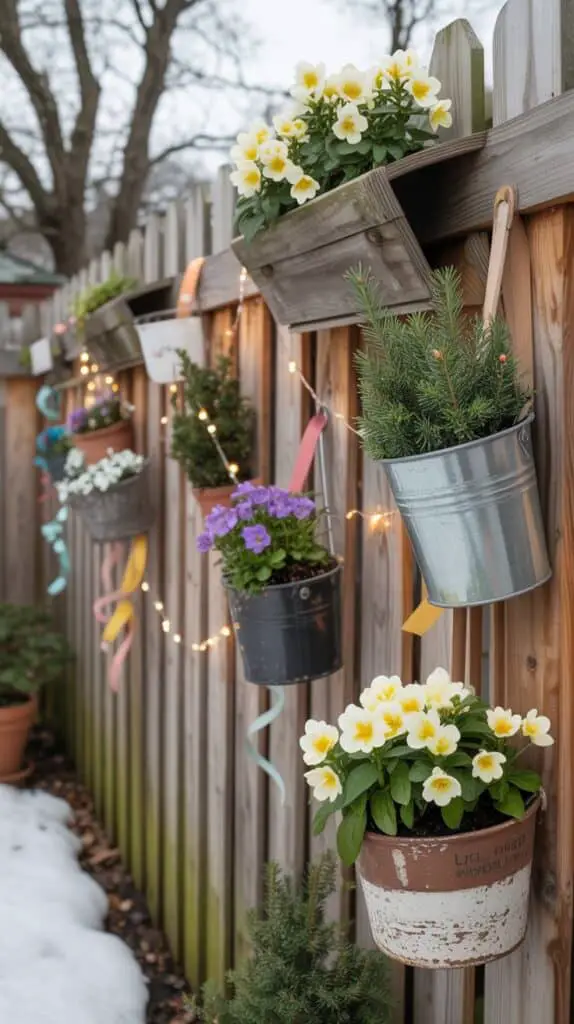
If your yard has a fence, don’t ignore it—it’s prime space for vertical interest and easy winter decorating. Try planting climbing winter jasmine, which bursts into yellow flowers in mid-winter and doesn’t ask for much. It’s bright, cheerful, and stands out against a neutral fence.
If climbing plants aren’t your thing, hang small containers or repurpose old wall planters with low-cost winter plants like violas or dwarf conifers. A few lights or ribbon scraps make it festive without getting holiday-specific.
This is especially effective in family backyards or narrow side yards that need structure and color without a big footprint.
Blend flowers with pet-friendly layout ideas
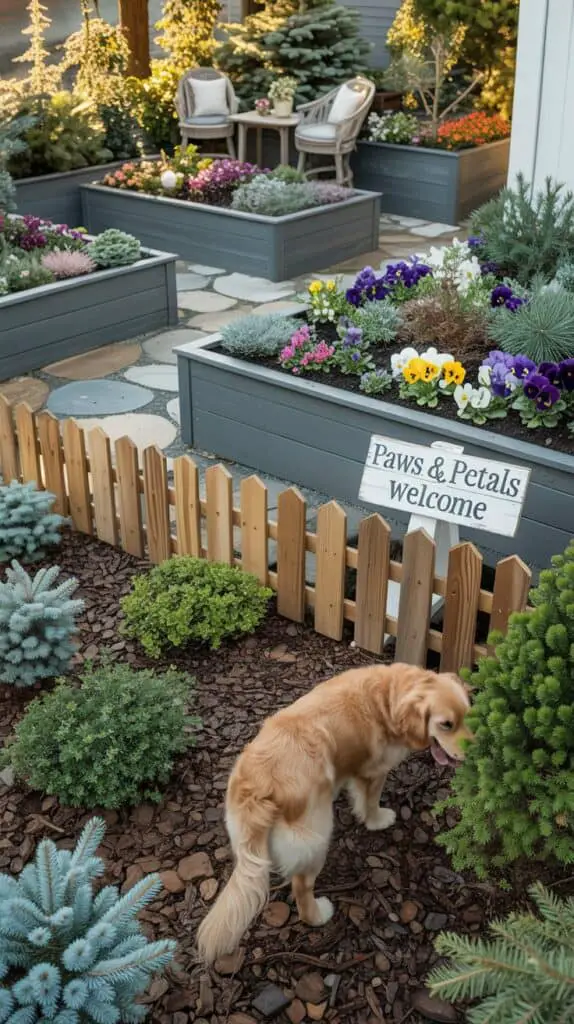
Winter yards still have to work for your whole household—including the furry ones. Try framing your winter flower beds with materials that also function as pet-friendly yard decoration. Think stone edging, low fences, or decorative log borders that keep dogs from charging through your newly planted pansies.
Use raised beds to keep flowers safe, and create small nooks with bark mulch and durable plants like wintergreen or dwarf pine where your pets can explore without wrecking anything. It’s all about layering design with real-life needs.
Even adding a small DIY pet-themed garden sign can make the space feel intentional and family-friendly while helping keep paws off delicate areas.
Stick to three colors and repeat them
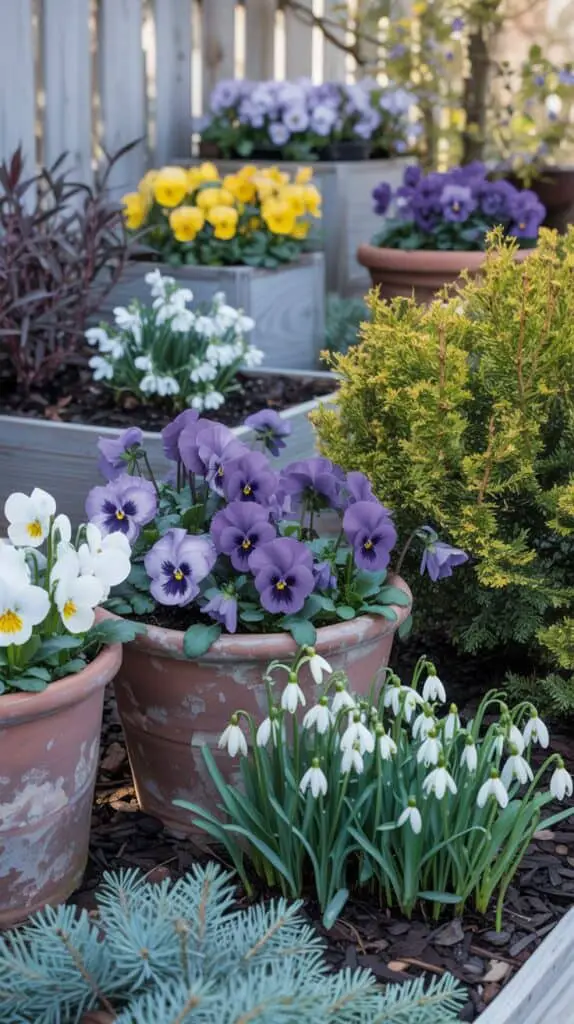
If you’re unsure how to make winter flowers look good together, the trick is simple: pick three colors and repeat them throughout the yard. For example, deep purple, white, and soft yellow. Use pansies, snowdrops, and dwarf conifers to hit those tones and repeat the combo in different containers or bed areas.
This technique works well in simple backyard landscaping where too many ideas can easily feel chaotic. Repeating colors gives the illusion of a designed yard, even if you only planted three types of flowers.
Plus, sticking to a small palette helps you avoid buying random plants that don’t go with anything else (we’ve all done it).
Winter flowers don’t need perfection to shine
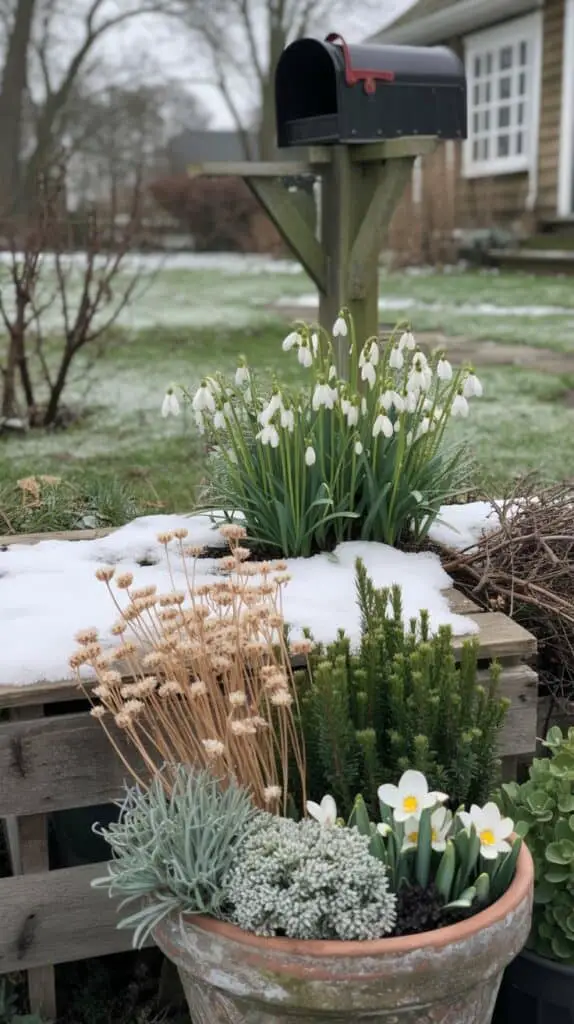
Remember, winter landscaping doesn’t have to look perfect. It just has to feel cared for. A few snowdrops peeking out near the mailbox. A repurposed pot filled with dried seed heads and tucked greenery. A section of your front yard that holds color when everything else fades.
The goal is to create warmth and interest, not a botanical garden. And when you’re working with a family budget? Every bit of charm you add without draining your wallet feels like a win.
Whether you’re planting November flowers in a cottage garden or just want your townhouse front porch to look a little less “meh,” winter flowers have a quiet kind of beauty. And when the rest of the street looks grey and tired, you’ll be glad you took the time to tuck in something that blooms anyway.
